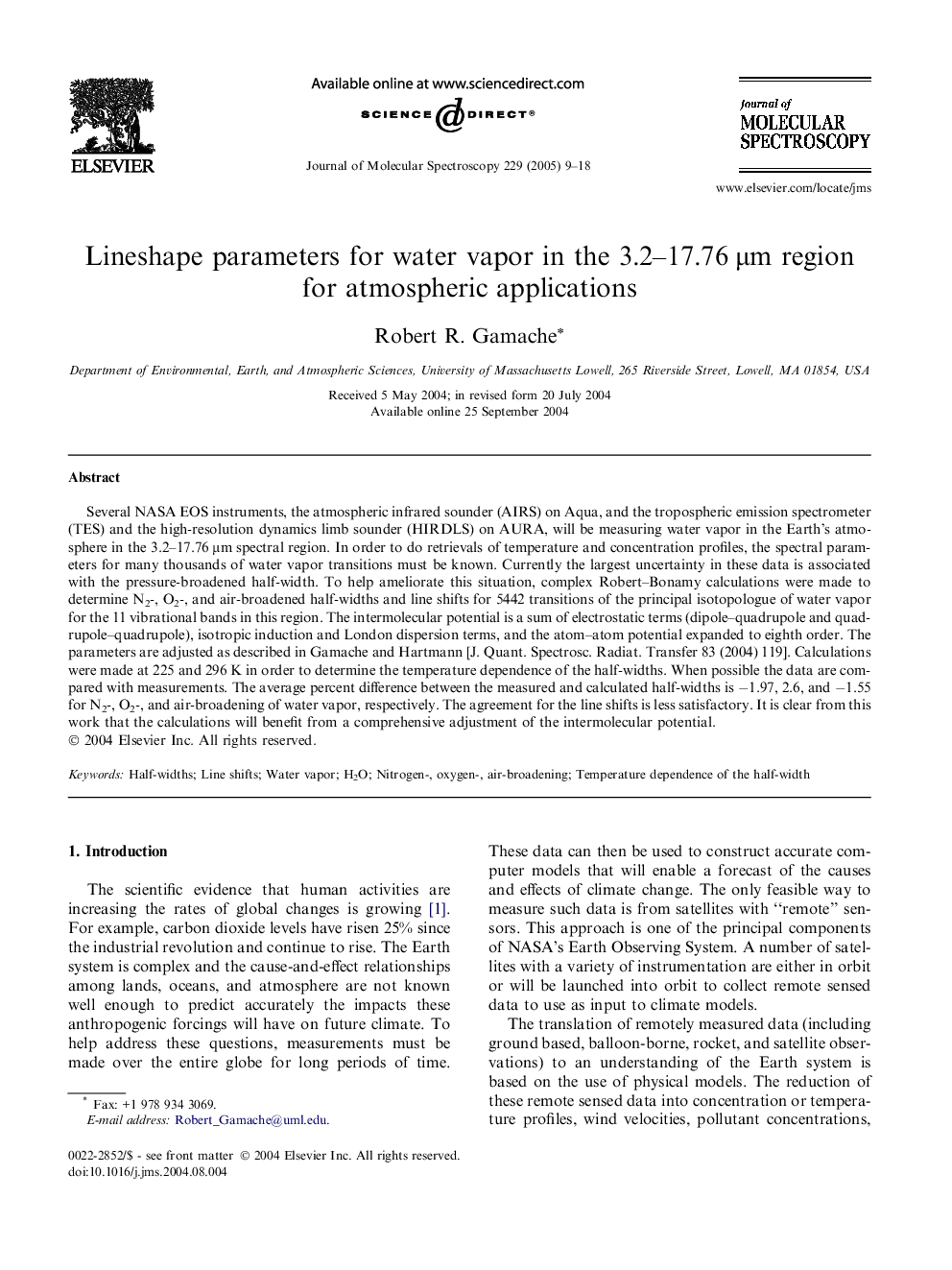| Article ID | Journal | Published Year | Pages | File Type |
|---|---|---|---|---|
| 9589674 | Journal of Molecular Spectroscopy | 2005 | 10 Pages |
Abstract
Several NASA EOS instruments, the atmospheric infrared sounder (AIRS) on Aqua, and the tropospheric emission spectrometer (TES) and the high-resolution dynamics limb sounder (HIRDLS) on AURA, will be measuring water vapor in the Earth's atmosphere in the 3.2-17.76 μm spectral region. In order to do retrievals of temperature and concentration profiles, the spectral parameters for many thousands of water vapor transitions must be known. Currently the largest uncertainty in these data is associated with the pressure-broadened half-width. To help ameliorate this situation, complex Robert-Bonamy calculations were made to determine N2-, O2-, and air-broadened half-widths and line shifts for 5442 transitions of the principal isotopologue of water vapor for the 11 vibrational bands in this region. The intermolecular potential is a sum of electrostatic terms (dipole-quadrupole and quadrupole-quadrupole), isotropic induction and London dispersion terms, and the atom-atom potential expanded to eighth order. The parameters are adjusted as described in Gamache and Hartmann [J. Quant. Spectrosc. Radiat. Transfer 83 (2004) 119]. Calculations were made at 225 and 296 K in order to determine the temperature dependence of the half-widths. When possible the data are compared with measurements. The average percent difference between the measured and calculated half-widths is â1.97, 2.6, and â1.55 for N2-, O2-, and air-broadening of water vapor, respectively. The agreement for the line shifts is less satisfactory. It is clear from this work that the calculations will benefit from a comprehensive adjustment of the intermolecular potential.
Keywords
Related Topics
Physical Sciences and Engineering
Chemistry
Physical and Theoretical Chemistry
Authors
Robert R. Gamache,
